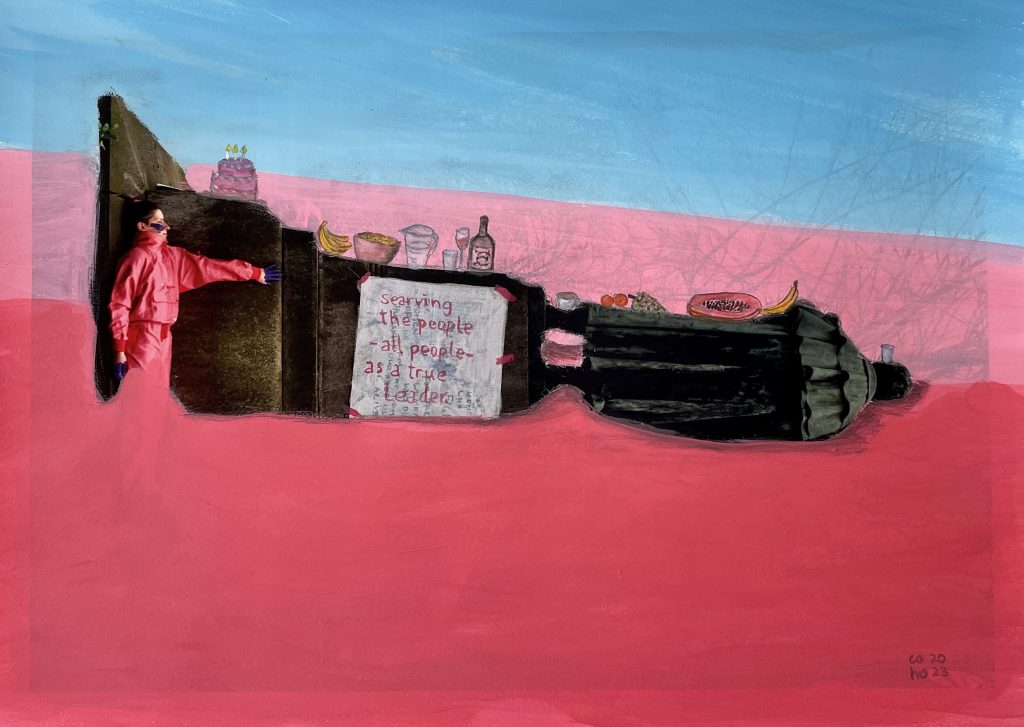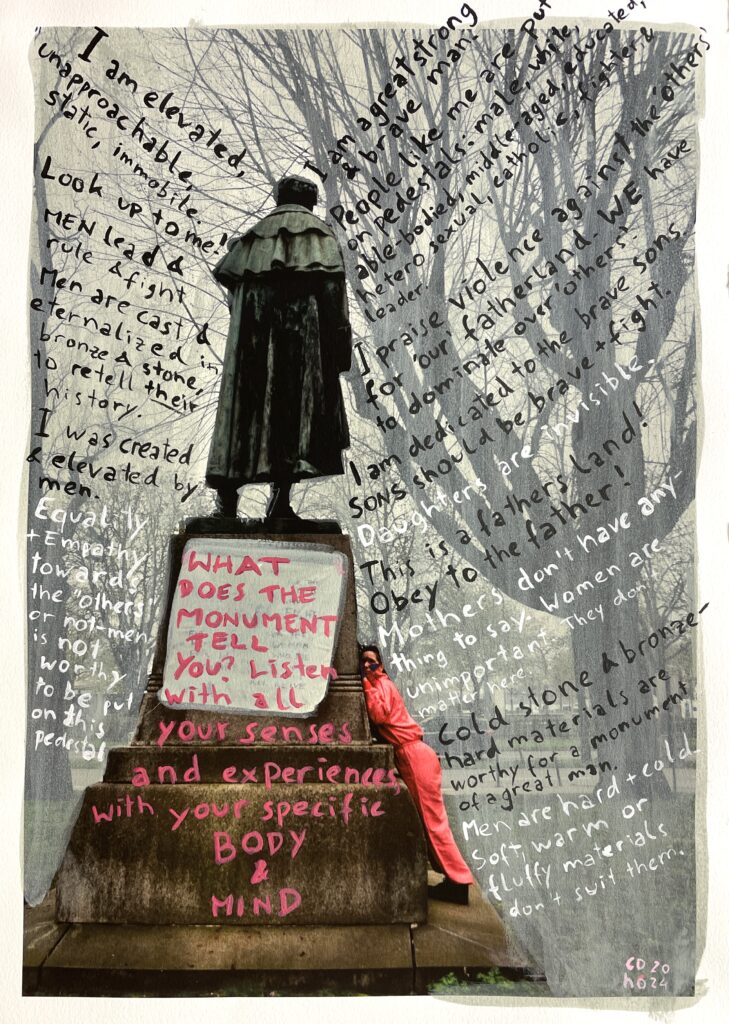
FEMonumental Transformances in public space. A transmedia performance art method to transform patriarchal monuments into feminist monumental practices. Artistic Research Project.
While using public spaces we pass by several monuments, not recognizing most of them. Monuments are physical forms of commemoration, erected by those in power to ‘reconstruct the past in such a way that [it] is taking part in the present and the future’ (Kulisic & Tudman 2009, p. 132). Rebecca Schneider (2022), in reverence to De Certeau, describes the past agendas of monuments as ‘secrets’. The public unconsciously accepts the statements made by monuments as they pass them by. Only interruptions, such as public protests, reveal the not so secret ‘secrets’ of the monuments (Schneider 2022, p.1-4). FEMonumental Transformance seeks to reveal their patriarchal ‘secrets’. Within patriarchal society, monuments embody, represent and recreate patriarchal conceptions using ‘gendered symbolism’ (Pejic 2015). Patriarchy as a form of social order and control where men hold primary power, has built the foundation of our societies for more than 4000 years (Lerner 1986). All western thought (including philosophy, religion, history, sciences) is based on the construction of gender wherein everything defined as ‘female/feminine’ is subordinate to the ‘male/masculine’ (Lerner 1986). Patriarchal and sexist conceptions shape our perception and thought, constantly refreshed through impressions from our surroundings, such as monuments. How can we transform such patriarchal structures using transmedia performance art?
FEMonumental Transformance is an artistic method and concept which seeks to transform existing patriarchal monuments into FEMonumental (feminist monumental) practices. It is a confrontation of bodies in the here and now: of the monument and the female*[1] or non-binary body of the artist.The method applies performative explorations, experimental movie making, writing, and overpainting of performance photographs. The aim is to detect specific patriarchal structures and create publicly alternative, intersectional queer feminist (hooks, Grosz, Ahmed) practices in their place. The created FEMonumental practices are performative and visual experiments, moments of reflection in the process of unlearning patriarchy. Included in the project is the FEMonumental Guide, a toolkit providing a test to determine if a monument is patriarchal, along with methods through which monuments may be transformed. This kit is available to other artists to use in their own socio-political and cultural contexts, to create a collection of FEMonumental practices.

Picture 1: Patriarchal statements of the Dr. Anton Schneider statue in Bregenz (Austria), resulting from the performative exploration using the Test for patriarchal structures. Text-based overpainting to visualise the process.
Publication Public Positions by the Master Performing Public Space.
The complete documentation of the artistic research process is available here: https://www.researchcatalogue.net/view/1728700/1728701
book a workshop to transform a monument in your own city with Conni Holzer.